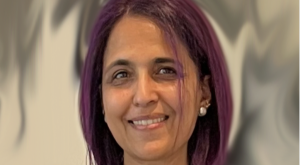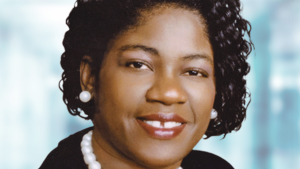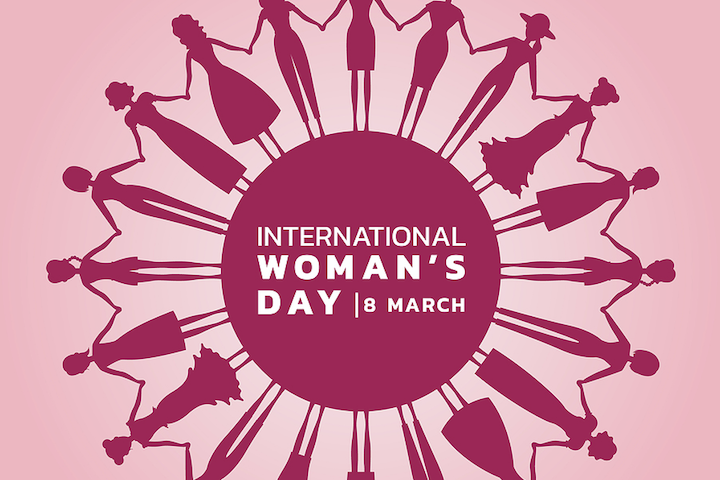Today is International Women’s Day (IWC) – a worldwide celebration of the role of women and women’s equality and gender equality.
The movement wants to help others imagine a world that is gender equal world – one that is free of bias, stereotypes, and discrimination.
But with only a third a women agreeing that they think it’s a good time to be a woman in America (and two thirds – 66% – of women believing there is not full equality for women in work, life, and politics), there is evidently still much to be done.
HR professionals have a vital role in addressing some of these concerns – by promoting diversity and equality in the workplace.
So how can they really champion the pursuit of fairer, more gender-equal workplaces, and what inspiration can they take from other leaders.
In celebration of International Women’s Day, we canvassed the views of women who understand what steps still need to be take.
We hope you can take inspiration from what they say:
Louise Willoughby-Petit, VP of people at Beekeeper

“Each year, International Women’s Day serves as an opportunity for organizations to reaffirm their commitment to better supporting working moms, female shift workers, and equal access to career advancements. Flexible work has been an ongoing conversation among HR departments for years. But as hybrid or remote office workers enjoy the flexibility and freedom that comes with working from home, frontline workers are asking themselves a hard question — what about us? While women make up about half of all frontline workers, they account for over 64% of essential frontline workers in critical industries like healthcare and childcare, according to CEPR. For this reason, addressing the needs of frontline workers, particularly women, is crucial given their disproportionate presence in positions serving vulnerable populations that require significant demands. Female shift workers and working moms in particular are one of the core groups of frontliners waiting for the flexible work trend to reach them. By leveraging better technology to improve daily life for frontline workers, little by little the frontline disconnect and gaps in equity can begin to be mended. This shift not only reduces stress and streamlines outdated processes, but also integrates frontline workers more effectively into their workplace cultures and communities. The result is lower frontline turnover, higher engagement and better customer service. And overall happier team members. When frontline disconnect evolves into frontline success, everybody wins.”
Paulina Ortiz, human resources manager, Leaseweb Canada

“International Women’s Day represents a moment to celebrate feminine energy and the diverse qualities it encompasses and brings to the workplace, such as intuition, empathy, and creativity. It’s important to recognize that these attributes are not limited by gender but should be celebrated in all individuals. As we strive for gender equality, companies need to celebrate the unique contributions each person brings to the table, fostering an environment where everyone can thrive authentically. To me, this year’s theme: “Invest in Women: Accelerate Progress” means recognizing the importance of investing in resources, support, and opportunities for women to accelerate progress toward gender equality. Initiatives like mentoring programs and transparent promotion processes can empower women to rise to leadership roles, driving progress toward a more inclusive workforce. Ultimately, true progress lies in recognizing and embracing the talents and perspectives of every individual, regardless of gender or identity.”
Shirley Knowles, chief inclusion & diversity officer, Progress:

“International Women’s Day serves as a reminder of the struggles and achievements of women throughout history. It is a day to celebrate the social, economic, cultural and political achievements of women and to call for gender equality and women’s rights. It also raises awareness about the challenges and discrimination that women continue to face around the world and serves as a catalyst for change and action. Women should be helped to build their confidence, self-esteem, and assertiveness to overcome imposter syndrome and other barriers that may hold them back in the workplace. I say don’t be afraid to let women speak up, and for them to share their ideas. Assertiveness is key. Women can continue to advocate for gender equality in the workplace by speaking up against harassment, inequality, and bias. They can support I&D initiatives and work towards creating a more inclusive and supportive work environment for women.”
Arti Raman, CEO and founder, Portal26

“In my role as a minority tech entrepreneur, I am hyper-cognizant of the diversity gap in my profession. STEM needs ongoing representation to encourage women, but unfortunately, disparities in treatment often push girls and women away. Due to these differences in both educational and professional settings, we’re seeing the number of women in tech roles past the age of 35 cut in half. This concerning trend signals institutional issues like inadequate support and undervaluation of their capabilities. Even with the progress we’ve made, we need to further enhance the visibility and representation of women in STEM roles, as well as create environments that promote trust and collaboration for increased representation. Furthermore, it is crucial that we recognize the role boys and men can play in advancing this cause. On this International Women’s Day, it’s important we applaud achievements made, create opportunities for growth, and consistently reminding women that they have endless potential.”
Connie Stack, CEO, Next DLP

“International Women’s Day is an important day that I take a moment to recognize and mark every year. It serves as a reminder of how far women have come and the progress made in gaining equal status to men in all aspects of our lives. However, employers still need to work harder to promote women into leadership roles and pave a path for more of them to become CEO’s. The number of female CEOs is still abysmal – only 5.8% of Fortune 500 global companies have women in the chief executive’s office. If we want to see more women in C-suite and managerial roles, companies have got to get serious about leveling the playing field. It’s not just about ticking boxes; it’s about creating a culture that values and champions women at every level. This year’s IWD theme is #InspireInclusion, and this can be done by promoting diversity in leadership, creating inclusive spaces, offering flexible work arrangements, amplifying underrepresented voices, and engaging in social impact initiatives.”
Sylvia Zachary, cyber security & software director, Cubic Defense

“In my current role at Cubic Defense, I am proud to say human capital is a priority in all business strategies. Companies have created significant momentum and progress in developing environments that cultivate diversity, inclusion and equity – especially in critical industries like technology, security and public safety. Organizational leaders today are more open to constructive feedback and wish to foster workplaces that invite talent regardless of gender. Organizational leaders are much more open to constructive feedback and wish to foster workplaces that invite talent regardless of gender. However, there is always more work to be done. As we celebrate International Women’s Day, I want women to come together and take the steps towards building these ecosystems, safe spaces, and their strengths that make them formidable. Use your support system, mentors, allies, and advocates, for encouragement and believe in yourself and value your contributions.”
Wendy Zveglic, VP Engineering, Fluent Commerce

“One of the biggest challenges faced by women is the recruitment process itself. The language used in job descriptions can be crucial in deciding whether to apply for a role. Words like ‘ambitious’, ‘aggressive’ and ‘fast paced’ aren’t as neutral as one might think. There are a number of tools that can be used to ensure job descriptions are as unbiased as possible and we use them here at Fluent. This has to then carry through the hiring process, with interviews being held with multiple team members of different genders and there needs to be a diverse group reviewing hiring decisions. Another challenge is the culture at many organizations. They need to question how inclusive they truly are. Workplaces are often hostile environments for women, so businesses need to play their part in changing this, creating a culture where women feel safe and supported so they can assert themselves and grow. It’s one thing to successfully recruit women into the tech sector, but another to retain them. Organizations should confront unconscious bias, nurture talent, facilitate professional development opportunities, and re-evaluate traditional norms to spearhead the change needed.”
